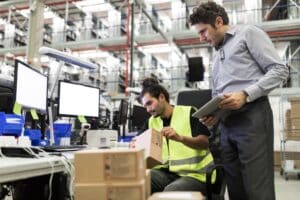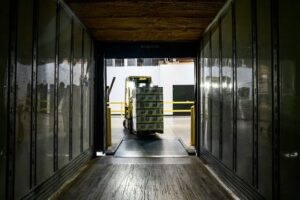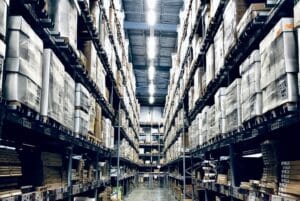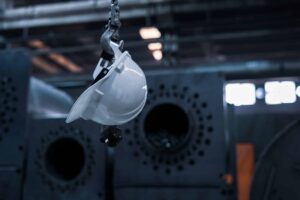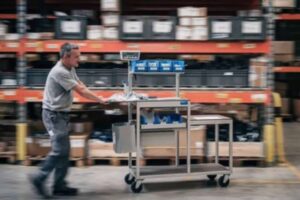WMS and trolley 4.0: best practices and key success factors
WMS software
Logistics
4.0 solutions
Supply Chain
October 10, 2024
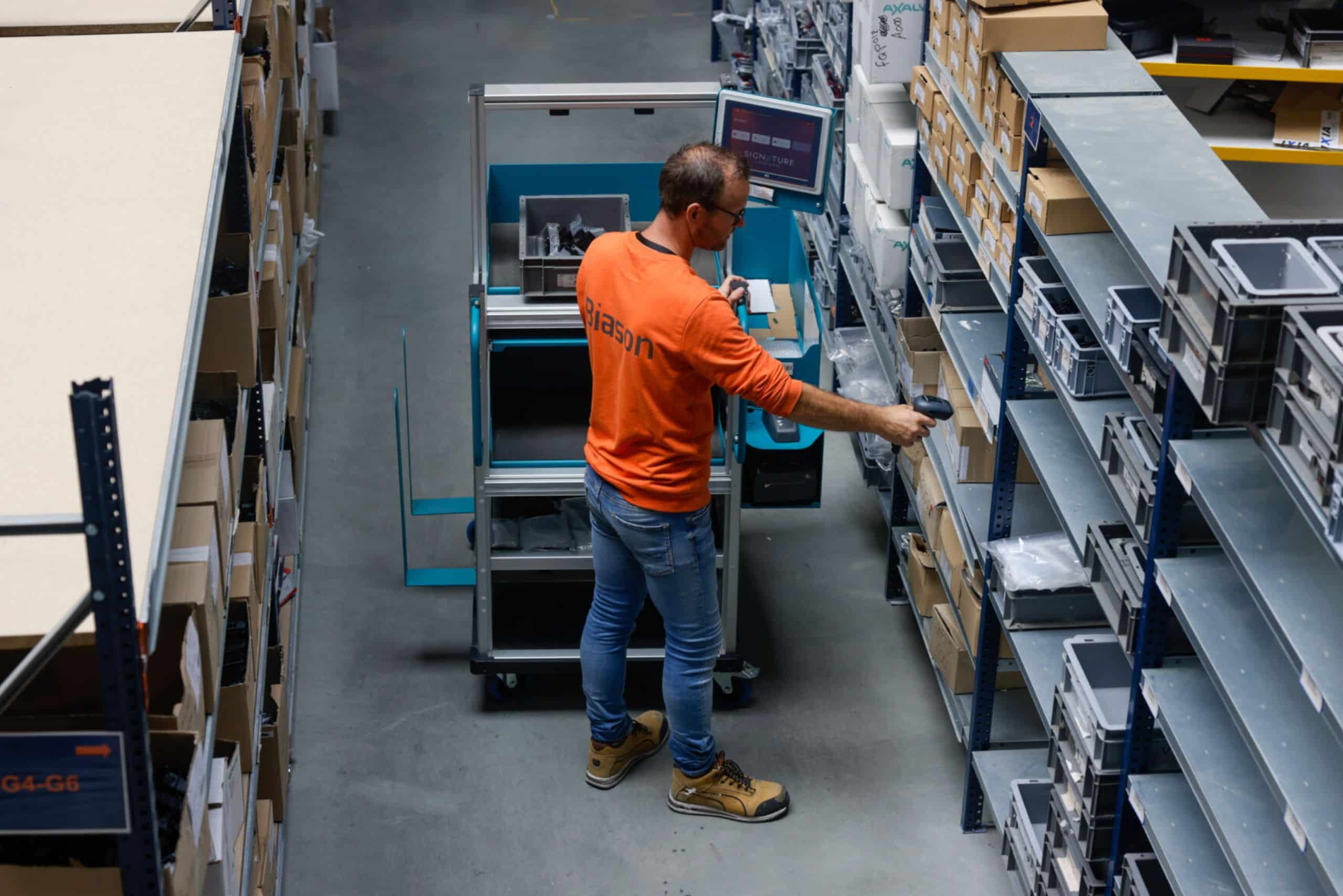
Having followed technological developments over time, trolleys have gradually transformed to become connected . They are now an integral part of the teams and adapt to the different logistical contexts of warehouses (the nature of the products, the number of orders per day, the size of the aisles, etc.).
Thanks to on-board technology and the possibility of connecting them to a WMS , they are considered true partners in the service of productivity .
What do 4.0 carts bring?
Above all, 4.0 (or connected) trolleys bring precision to everyday life . Thanks to on-board technology, the operator is more exact in carrying out his work.
Generally speaking, connected trolleys can be equipped with:
- Put to Light solution : control of the placement of the goods in the right place,
- Weight control : checking that the right quantity of merchandise is placed in the right location,
- Cameras : taking photos at each drop-off constituting proof in the event of tensions/disputes between a customer and their supplier, for example.
Teams will be more effective overall. Quality control will ultimately be reinforced using the technologies mentioned above, to which image control can be added, for example.
The 4.0 truck, thanks to these technologies, will provide more precise information and allow operators to be more efficient in their daily work. Indeed, everything can be calculated, from the number of stops and starts of the trolley to the distance traveled per day. All this data can be used, for example, to:
- Plan maintenance of the cart,
- Know if your warehouse is well organized,
- Help operators in their work by understanding the difficulties they may encounter…
In a future use of the connected cart, we can consider making work more fun for the teams . As the trolley follows technological developments, it is certain that the way of working will continue to progress, thus opening up many perspectives.
What link with the WMS?
A WMS collects and feeds on data and information. For this collection, our EGO platform is equipped with 2 modules called “Dashboard” and “EGO Perf” which will manage changes in individual and collective productivity.
Via “EGO Perf”, the data collected will make it possible to influence the efficiency and productivity of teams. Indeed, thanks to them, bottleneck situations will be avoided, resource needs will be better defined and all this will lead to time savings at the organizational level.
The “Dashboard” module of the WMS EGO, for its part, aims to teams with all the information they need in real time
- The number of orders remaining to be prepared,
- The time of the next lifting,
- The level of urgency of certain tasks,
- The number of pallets to be stored on the dock,
- Etc.
This contextual information will have the effect of supporting the work of the manager in the field who will thus be able to ensure that all the resources in the warehouse are placed on the right focus point.
Implementation of cart 4.0: what factors for success?
The key success factors will be found at 3 levels :
- Synchronization of logistics flows
- IT integration
- Maintainability of the solution
When the implementation of a solution like the 4.0 trolley is considered in a warehouse, this means that the company has reached a certain logistical maturity. As a general rule, the first brick to digitize via a WMS corresponds to the flows in order to synchronize them:
- Synchronization of reception with replenishment,
- Synchronization of replenishment with preparation,
- Synchronization of preparation with loading.
This action allows operators to manage, for example, line stoppages or load disruptions which will impact the efficiency and productivity of teams. The synchronization of all these flows also ensures the intersection of customer requirements with the company's logistics context (size of orders, product structures, types of carts, etc.) and thus pushes the collection most suited to operators.
This first brick constitutes an engine which will then give birth to the idea of automating or/and implementing a 4.0 trolley in order to optimize productivity and efficiency.
At the IT level, the challenge is mainly found in the processing of information and ultimately in its ability to process, analyze and exploit all this data.
Concerning maintainability, it is important to be aware that the 4.0 trolley integrates technology, which implies more complex maintenance. It is therefore essential that the manufacturer has complete technical control of his product in order to ensure good maintainability.
Most read articles
WMS software
Logistics
Supply Chain
November 7, 2025
Go beyond the ABC method: How a WMS refines your inventory management strategy?
In logistics, the ABC method is a classic. But here's the hard truth: in the age of e-commerce, relying solely on a static ABC analysis is like trying to win a Formula 1 race without the right car. The problem isn't the method itself, but treating it as an immutable truth set in stone once a year.
WMS software
Logistics
Supply Chain
October 31, 2025
Packaging optimization: How does your WMS save you money on transported "empty space"?
Empty space represents, on average, 57% of the volume of packages shipped in e-commerce. It's not just wasted space; it's money gone up in smoke. In this article, we'll analyze how a WMS platform can become the ultimate weapon against empty space.
WMS software
Logistics
Supply Chain
July 3, 2024
Inventory management using WMS software
To master your inventory management, it is imperative to use suitable and efficient inventory management software. With this automation, you can monitor the status of your inventory in real time, allowing you to make informed and rapid decisions to avoid stock-outs or overstocks.
